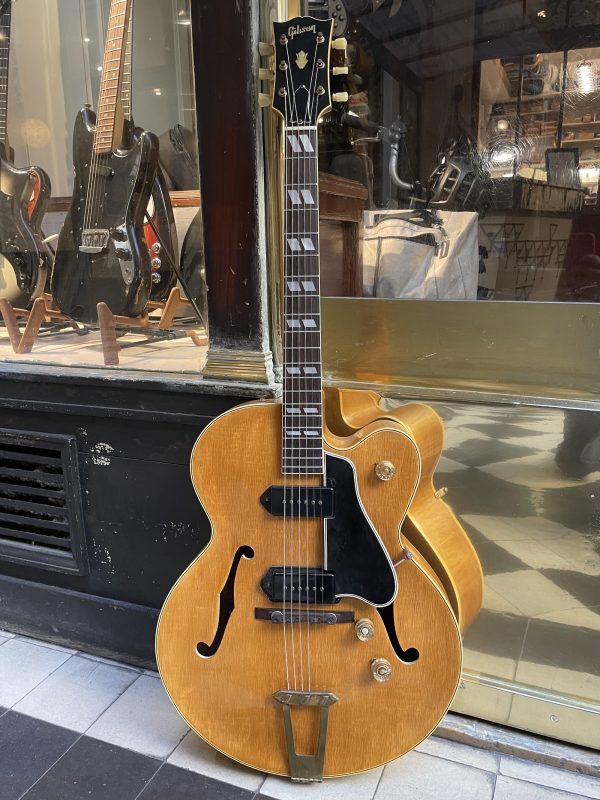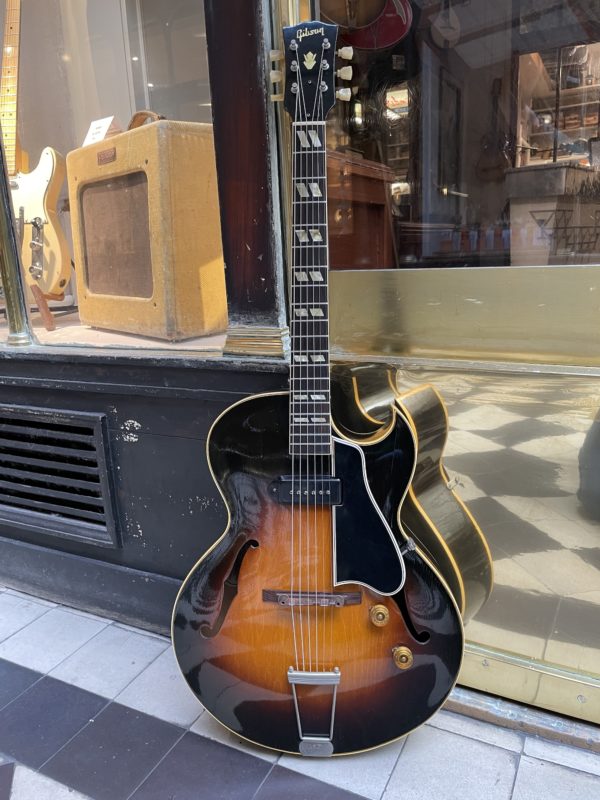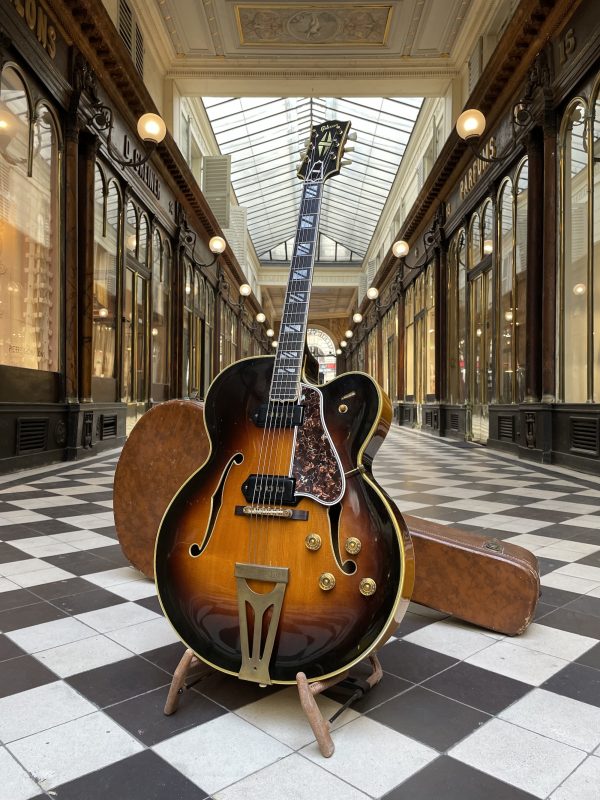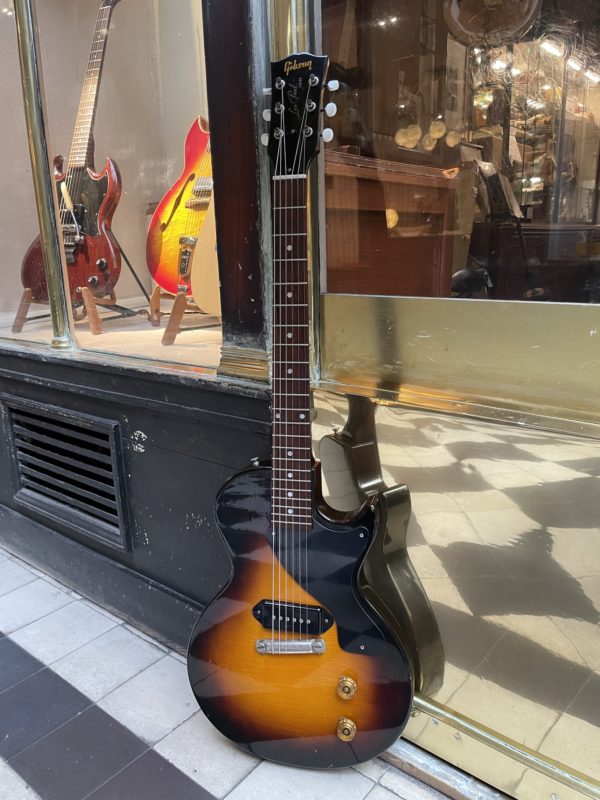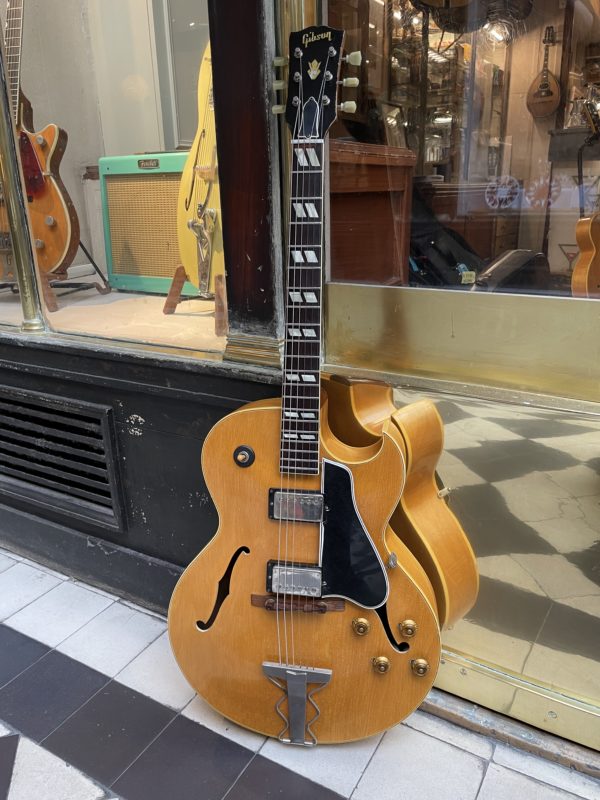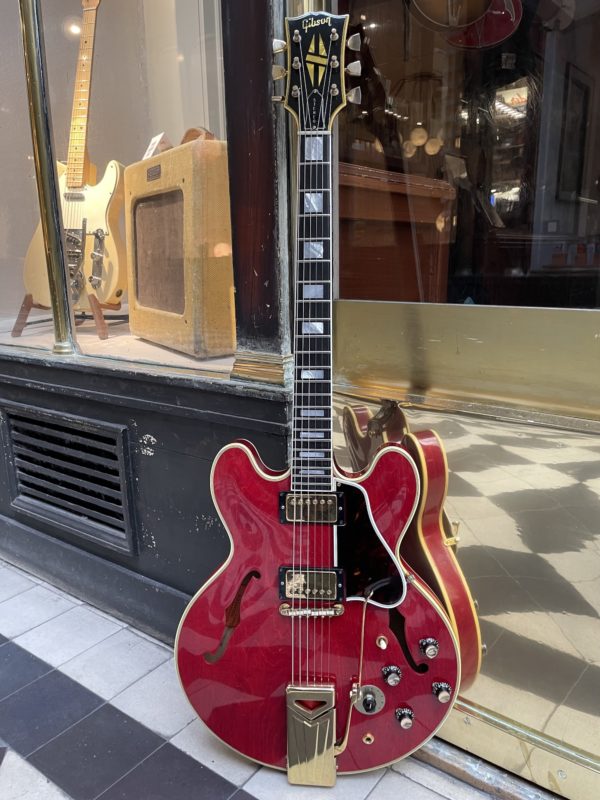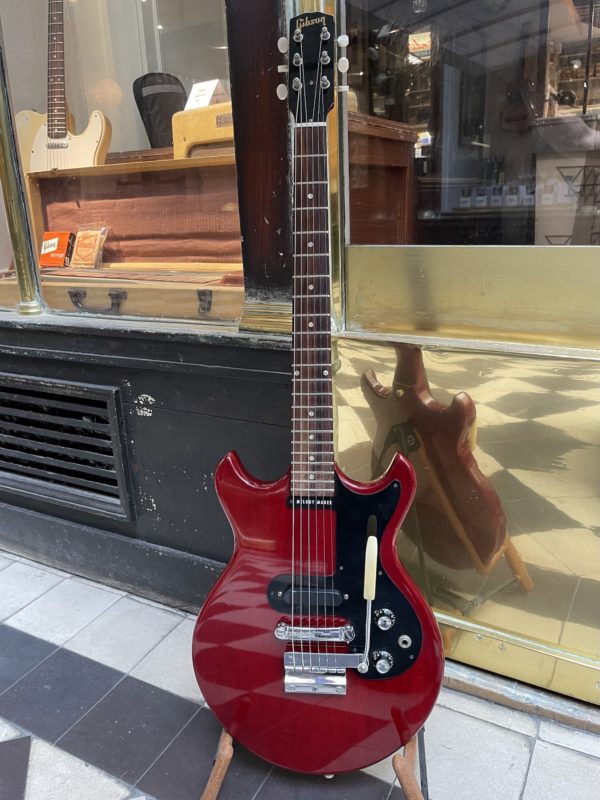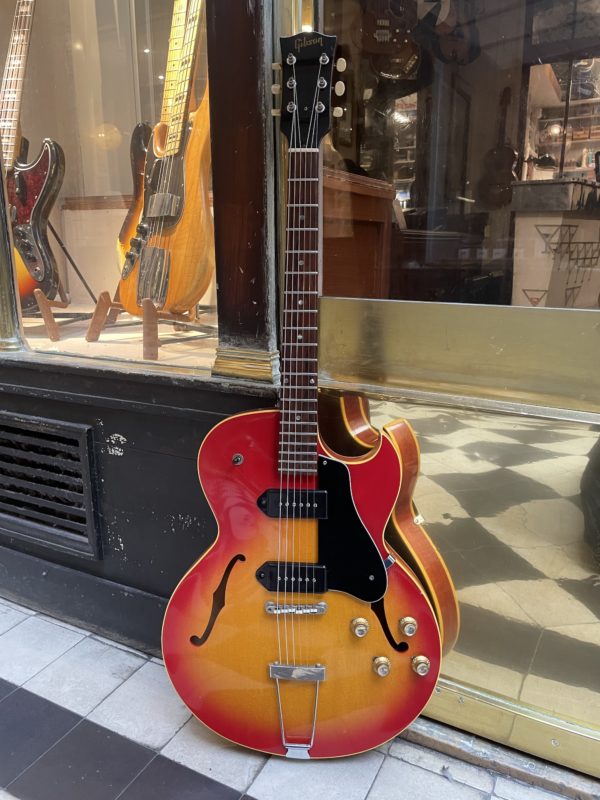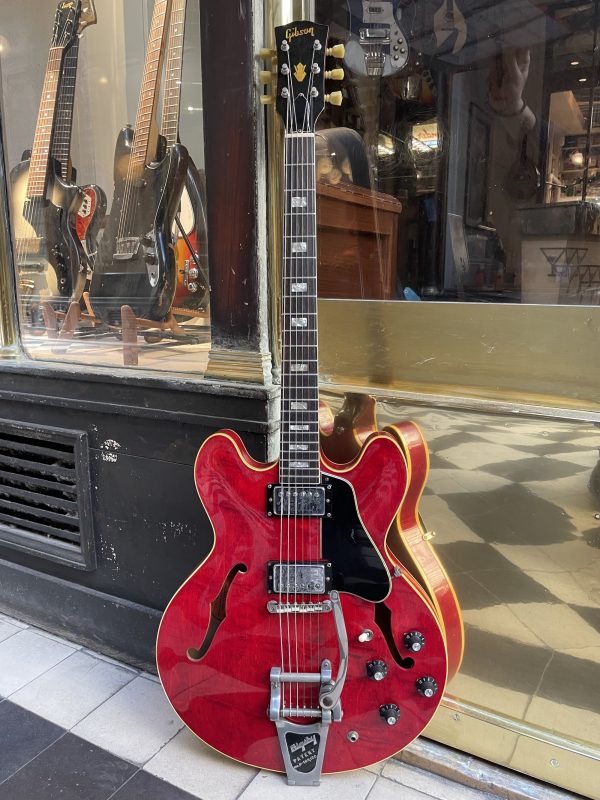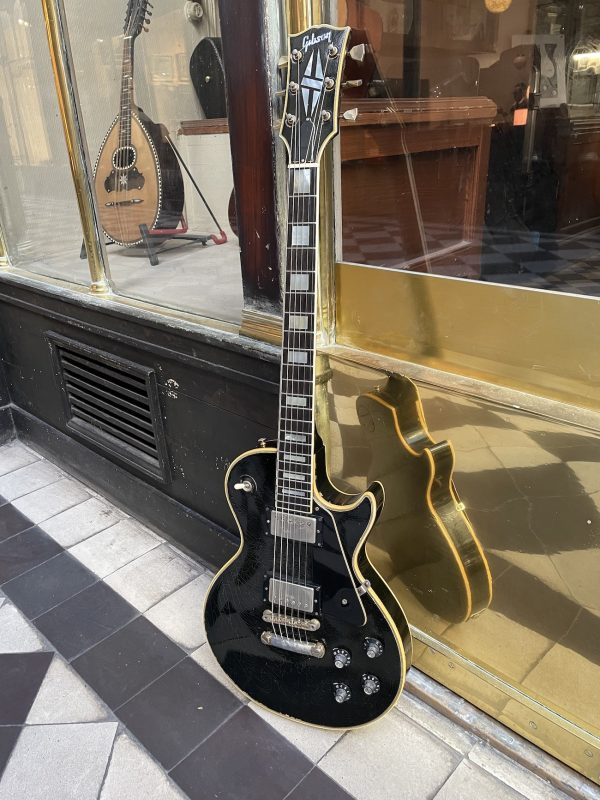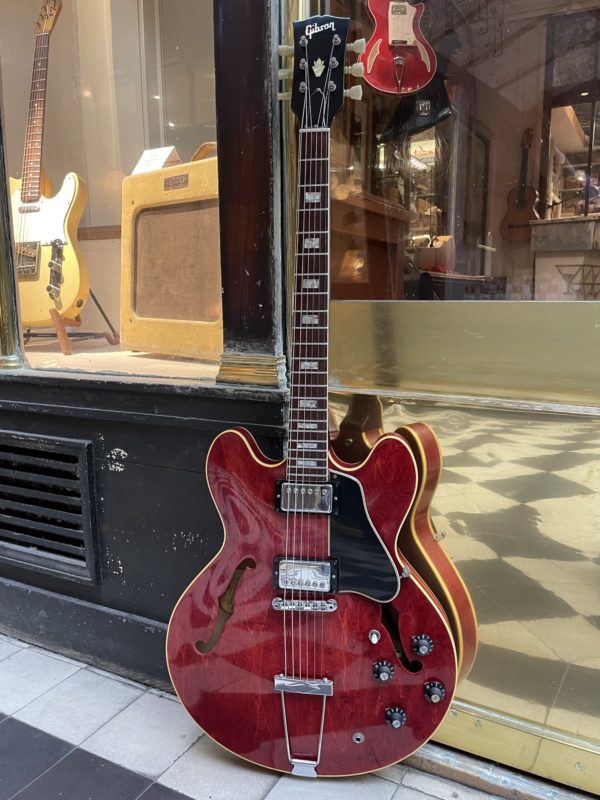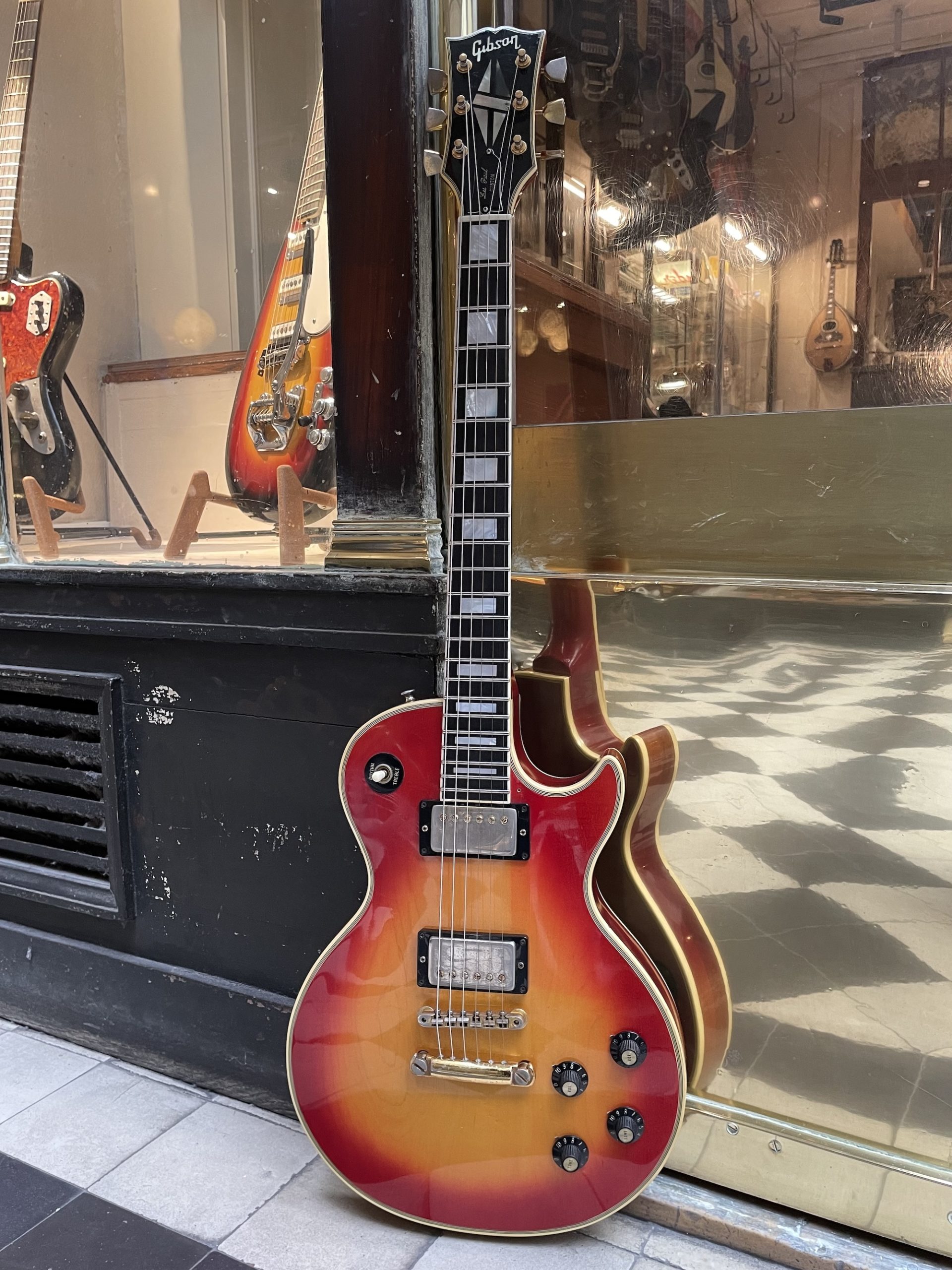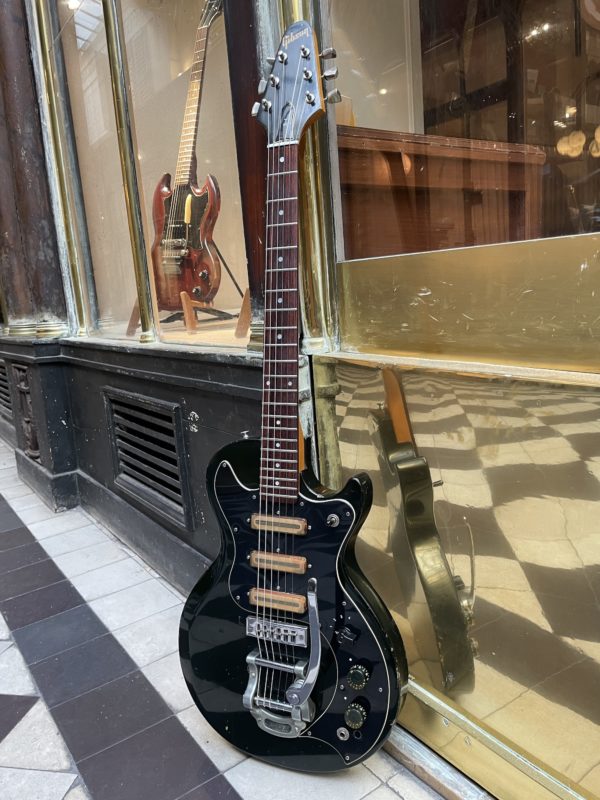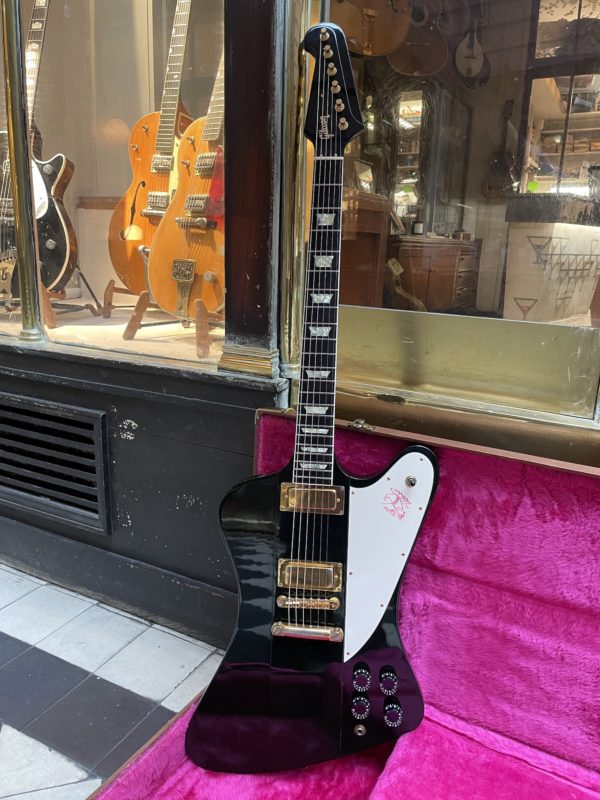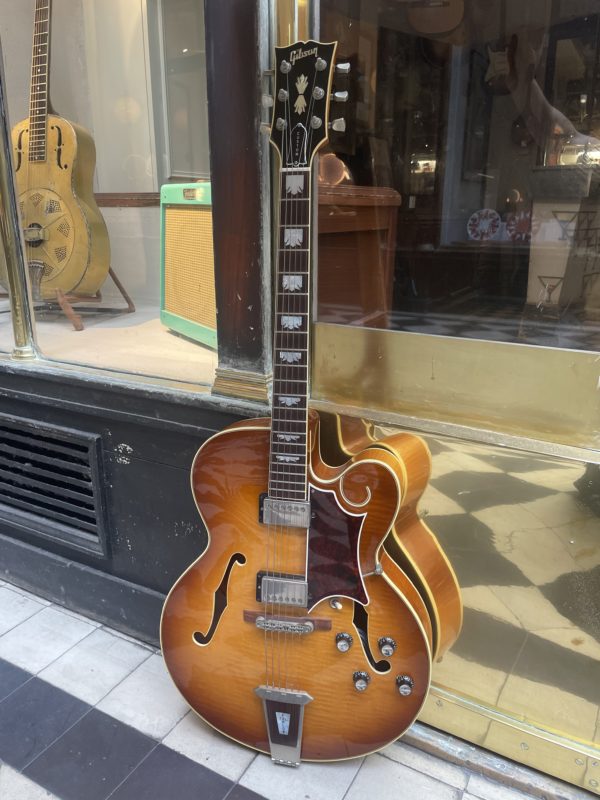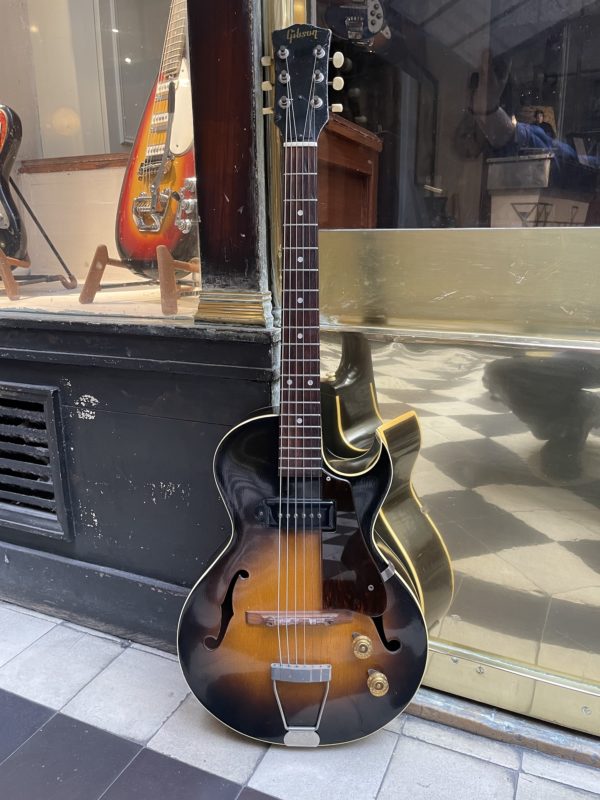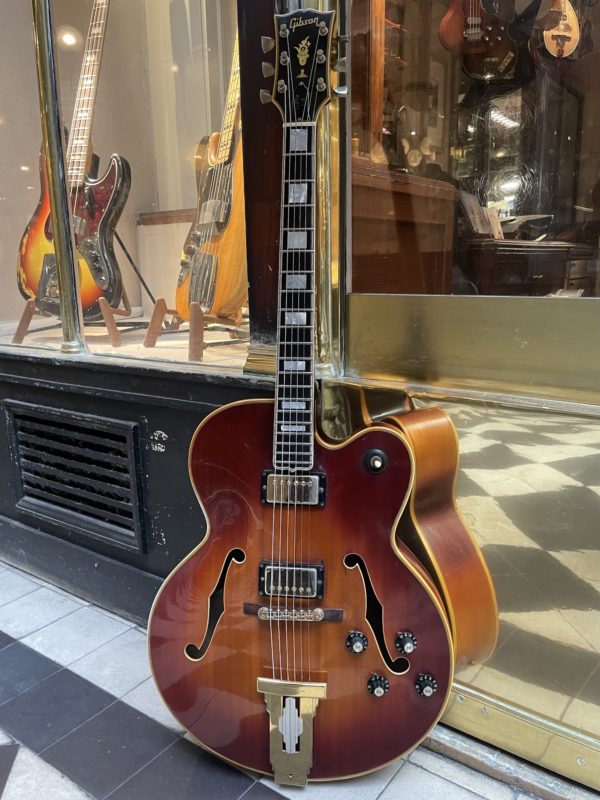Gibson Electric
1969 GIBSON LES PAUL CUSTOM – EX – RICHIE FAULKNER (JUDAS PRIEST)
1997 GIBSON TAL FARLOW CUSTOM
Gibson Electric
GIBSON ELECTRIC
After reversing its conservative positions and rushing into the production of electric lap-steel guitars, it was once again the Gibson company that reaped the benefits of innovation and caught the public’s attention in 1936 with its ES-150 model, – ES for Electric-Spanish i>-. This guitar, built on the economical archtop laminate-top model L-50, had Gibson‘s Grand Auditorium line proportions similar to the early L-5. The fundamental advantage of the Gibson ES-150 over its competitors, in addition to quality lutherie work, resided in the excellent pickup created by Walter Fuller and in its positioning below the fingerboard. This guitar would become the touchstone of all post-war amplified models, as the instrument began its true electric revolution. If it is no longer really an acoustic guitar and not yet an electric guitar in the full sense of the term, the Gibson ES-150 still works on acoustic principles by adding a sonic power, round and warm, colored by the dynamics of electricity which induces new forms of playing. This is most eloquent in the playing style of a certain jazzman, the one also who let himself be invaded by the potential of this instrument – and it is today evident that no one has ever phrased like Charlie Christian, no one has been able to revive the freshness of the originality of his playing when he first encountered the electric guitar. In this sense, he is very close to a Jimi Hendrix in his way of playing with the electrified instrument as a filmmaker does with color or light. The ES-150 model has long been a home base for many jazz guitarists, and not the least: master Jimmy Raney (1927-1995) with sublime touch; Francophile Jimmy Gourley (1926-2008); Oscar Moore (1916-1981); the too little known Mary Osborne (1921-1992); George Benson (1943); Barney Kessel (1923-2004); or even Charlie’s pupil and friend, and new prince of orchestral swing & blues T-Bone Walker (1910-1975) and even a Junior Barnard (1920-1951) in the context of Bob Wills’ Western Swing. Finally, how can we forget the faithful among the faithful, Belgian René Thomas (1926-1975): his Smoke gets in your eye solo from 1961 was recorded on this Gibson ES-150 model in the same amp as Charlie, an EH-150 .A dream opportunity to listen to an impeccable high-fidelity sound recording of this mythical electric couple through which the swing was amplified before passing an “electric” torch to the bebop.
Jazz is indeed the music of the thirties to the sixties and in the continuity of the Gibson ES-150, all the creations of Gibson which result from this major innovation are so-called jazz guitars! Gibson offered these in the golden age of the genre and over the years, quality ranges that met the demand of a clientele in search of the musicality of their idol. At a time when factory models were the same for professionals as for amateurs, everyone with a silver streak could afford a Gibson ES-120T for the more modest, a Gibson ES-125, ES-125T or ES-125TD, a much rarer Gibson ES-135, a Gibson ES-300, Gibson ES-350, Gibson ES-350TD, the sublime and gigantic Gibson Super 400, Super 400 CES, Gibson Byrdland, Gibson ES-125TD, a Gibson L5-CES, a signature Gibson Barney Kessel, a Gibson Tal Farlow, or even aGibson Howard Robertsor Gibson Trini Lopez for the most cross-over or even a Gibson Citation model which came on special order in 1969. The Gibson Custom Shop of the Nineties will be stingy with very beautiful invoices including magnificent reproductions of Gibson L5 in 16 inches Eddy Lang style (1902-1933) or in a beautiful Gibson Wes Montgomery. Rare guitars not to be missed today!
Contrary to all expectations, Gibson did not achieve immediate success in the field of the solid body electric guitar, far from it. The creation in 1952 of the Gibson Les Paul Gold Top, first equipped with P90 pickups before the humbuckers pickups in 1957, then the Gibson Les Paul Sunburst mounted with PAFs was strictly speaking a commercial and marketing failure. This is primarily attributable to a creation based solely on the reaction to Fender guitars and a product placement based on the image of Les Paul himself, whose reputation was that of a cross-over artist, a show man certainly very popular and in tune with the times, but not really at the level expected by musicians who loved Gibson in a period when jazz is still the king of the scene. In other words, the Gibson Les Paul is considered a pop singer’s guitar on mainstream TV shows. We are far from the clubs where the great Gibsons were played and where the history of the jazz guitar was written. Two things should be remembered from this failure: the first is that the myth of the Gibson Les Paul was born from the way in which the protagonists of this fiasco told their story, with on the one hand Ted McCarty who justified his choices and motivations by rounding off the angles of a more or less well-crafted file, and on the other the jubilant eloquence of Les Paul who – as usual – attributed much more to himself in this creation than reality by embellishing year after year his paternity in the creation of his eponymous model. And the second thing then? A failure may become a success ten years later when a new generation of musicians finds in Gibson Les Paul the ideal instrument to play their rock-blues at high output wattage! What is extraordinary in the history of the Gibson Les Paul is that its first reissue at the very end of the Sixties will be a failure of the heart of its audience. Everyone was waiting for a reissue of the Gibson Les Paul Sunburst, like the one that Mike Bloomfield (1943-1981), the first to unearth this ugly duckling of variety-jazz from the fifties, and it is a Gibson Les Paul Gold Top P90 and the obscure Gibson Custom with alnico pickup in the neck position and P 90 in bridge which made their entry in the catalog in 1968. Decidedly, the fate, or rather the lack of foresight of the venerable house Gibson of then, persists in making this guitar unpopular. Barring the few horrors of the overproduction period of the seventies, for example some Gibson Les Pauls – including an overweight first reissue, the so-called pancake with humbuckers in 1974 – it was not until the late eighties that beautiful Gibson Les Pauls with Sunburst finishes became available again in the catalogue. It cannot be overstated how much the early part of Henri Juszkiewicz’s time at the helm (1953) was a new golden era for Gibson and especially in its Custom Shop which offered very high quality reissues from the early 1990s until the dawn of the 2000s. Finally, fans of Led Zeppelin, Free, Dire Straits, Allman Brothers and others standard-bearers of the Gibson Les Paul Burst could have access to their wish so long misunderstood by Gibson itself!
The other electric models created by Gibson during the 1950s and 1960s, and which are still cult instruments today, have a happier history and have blended into the landscape of the music of their time more successfully. We will of course mention the immense success of the Gibson ES-335TD, Gibson ES-345TD, Gibson ES-355TD and Gibson ES-330 series, which are the real success and the very heart of Gibson, the most copied line of electric instruments in the world with the solid bodies of Fender. Unexpectedly, Gibson Les Paul variants, namely the Gibson SG, the Gibson Les Paul Junior, the Gibson Les Paul Special and even the Gibson Les Paul Deluxe from the seventies, would meet a more fortunate reception than their originator model. The Gibson models with original shapes such as the Gibson Flying V, Gibson Explorer models – or the ghostly Gibson Modern which only exists in reissue – were only a challenge when they were released in 1958 to, once again, give the impression of modernity against Fender! The Gibson Firebird or Gibson Thunderbird bass models produced from 1963 onwards will clearly be a marked and noticed tread into the waters of Fender…
As for these two great competitors Fender and Gretsch, 1965 – which corresponds to the resignation of Ted McCarty which will be effective in 1966 -, seems to be the point of no return for creativity at Gibson. This is the date on which historians – but also lovers of great guitars – agree to determine the true meaning of the term vintage. What follows may also be cherishable, desirable and coveted but nothing can compare to what was the quality production of pre-mid sixties guitars!


